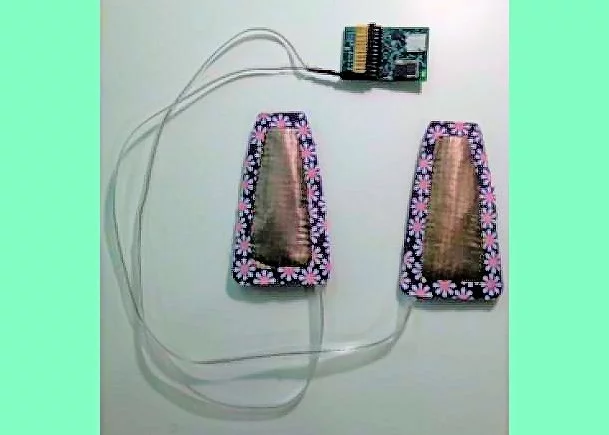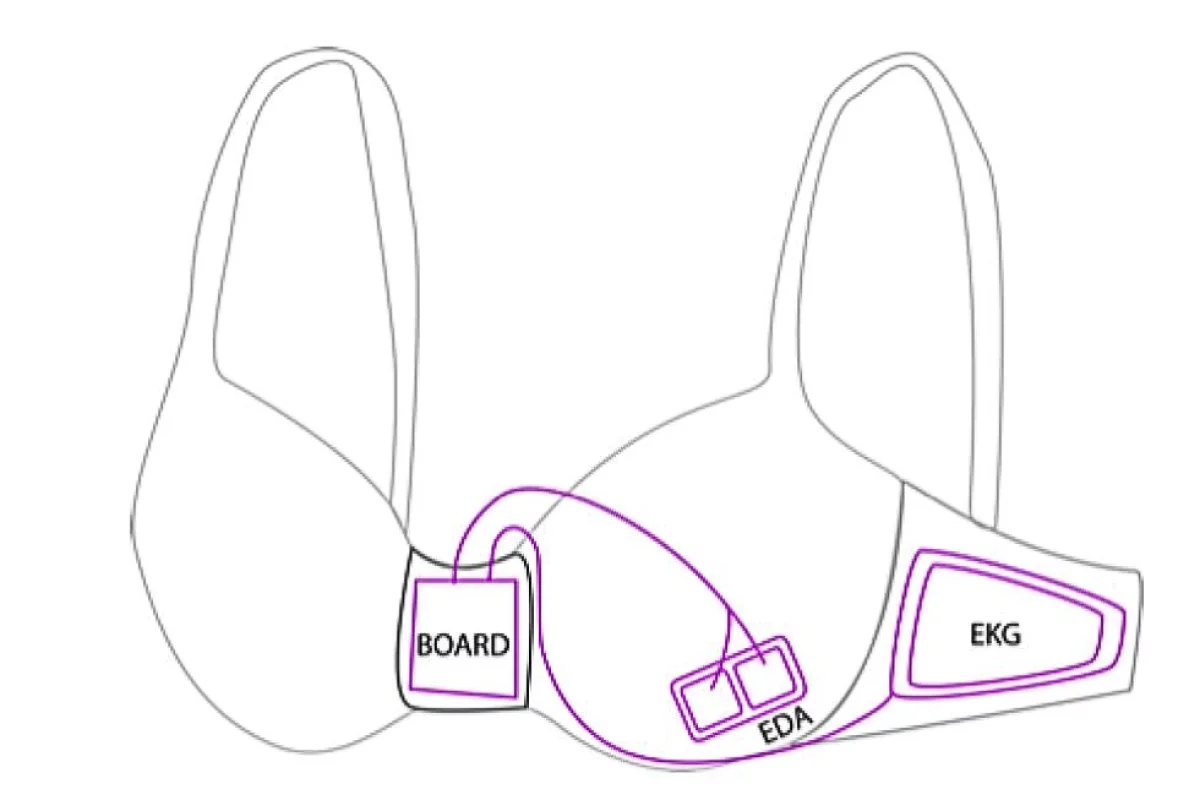Microsoft is throwing its hat (or rather, bra) into the ring, combining with engineers from the University of Rochester and the University of Southampton to develop a mobile platform which can infer your current emotional state and provide just-in-time feedback on when eating is a bad idea. Where do they hide the apparatus? In a bra.
Like Sony's concept SmartWig, the research isn't likely to deliver a killer app in the brave new world of wearable electronics, but the preliminary research report, however vague at present, does seem to have some value.
The research focuses on ways to give "Don't Eat!" feedback to a dieter based on their present emotional state. Based on extremely small studies involving only a handful of subjects, they decided that the self-reported emotional states associated with a moderate to strong urge to eat were pretty well subsumed by anxiety, boredom, and depression, in good agreement with previous studies.
Most participants reported that, although the logging of emotions and food intake made them more aware of the relationship between these events, it did not help them control the behavioral linkage. A substudy looked at attempting to ward off eating by using the self-reporting of emotional states to trigger a deep breathing exercise. While this did seem to help cope with the emotions, it had little effect on the eating.

Finally comes the bit relevant to wearable electronics. The research team designed and fabricated a sensor and analysis unit that would keep track of EKG and skin conductivity, and convert readings into an inferred emotion. (They ignored, by the way, existing hobbyist-level equipment thoroughly suited for their application in favor of in-house custom designed apparatus.) That inferred emotion is then fed back to the subject as just-in-time support to help deal with emotional overeating.
The electronics used for this purpose are completely standard in the field (although they chose a custom board), being based on a microprocessor with the auxiliary circuits needed to sample eight bio-signals. The EKG and skin conductivity sensor pads were made from 2.5 mm thick laser cut neoprene sandwiched with batting and laser cut conductive silver ripstop fabric. Again, there is no discussion of why this difficult path was taken instead of using conventional medical adhesive conductive pads.
The sensor placement fits the EKG pads snugly against each side of the ribs, and the skin conductivity sensor touches the underside of the breast from within the bra cup. Signals from a three-axis accelerometer and a two-axis gyroscope mounted in the bra were also recorded, for no reason mentioned in the paper.
Four women participated in a user study to see if emotional state could accurately be inferred from the sensor data. The same self-reporting method as used for the earlier logging of emotional state was used here to provide emotional data to compare with the EKG and skin conductivity measurements. A very odd statistical analysis (especially considering the extremely small sample size) claims to "classify arousal at 75.00 percent and valence at 72.62 percent accuracy" (72.62 percent accuracy from a sample of four?), but doesn't define what this means, beyond claiming the results are statistically better than random. (Arousal is apparently whether or not the subject is "pumped" and valence appears to relate to positive or negative emotions.) There is no description of how this information is normalized between subjects.
All in all, speaking as a research scientist, I have to say that this study and development effort would have been a pretty good result for a Junior-level high school science project. It passes understanding that seven people from three research institutions were required to carry this out, and why they thought this was worth publishing. I'm not going to take a guess, as I haven't enough information to figure out the purpose of publishing this work. I do suspect we've heard the last of the Microsoft SmartBra, although they apparently are trying to do something with wearable biosensing. I wish them luck, as it is an important problem with several important markets.
Source: University of Rochester




